Written and photographed by Susan Bergen, NCLT Board Member
Did you know that the pregnant queen is the only member of a bumble bee hive to survive the winter? All the other workers and drones die at the end of the season. The queen goes into hibernation, spending the winter underground in an abandoned rodent hole, under a rock or fallen log, or buried in leaf mulch. She is able to make her own ‘anti-freeze’ to keep her body from freezing. Once the temperature warms again, she emerges hungry, and in a rush to build a new nest, lay eggs and start a new colony.
Bumble bees are unique among bee species in that they are able to raise their body temperatures by shivering. This enables the queen to be active very early in the spring and all members of the hive to forage late into the fall until frost. In contrast, honeybees don’t usually fly if the daytime temperature dips below 55o.
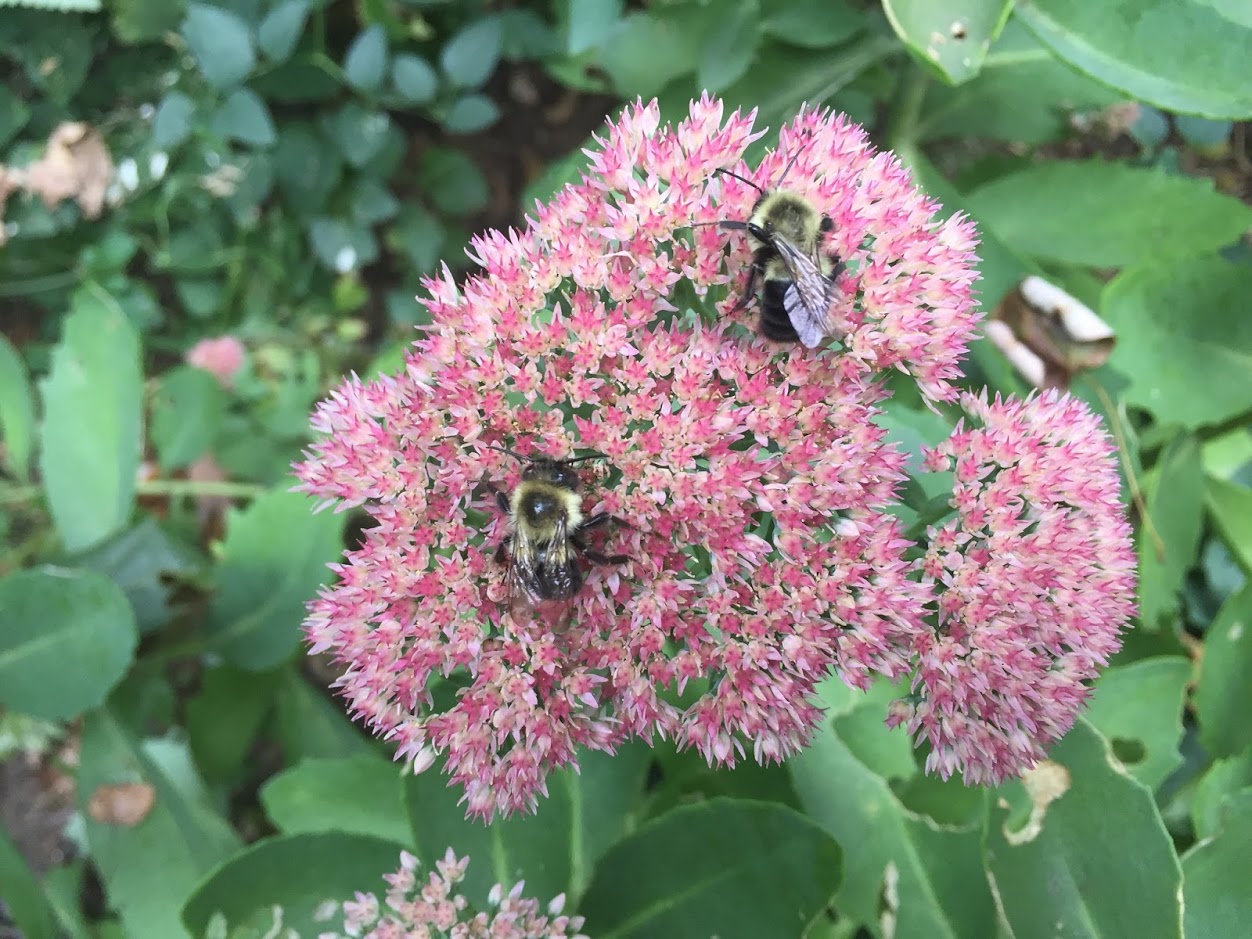
There are 4,000 species of native bees in North America. That includes 46 species of bumble bees, 16 of which have been identified in Connecticut since 1900. While most of our native bees are solitary nesters, bumble bees live in social colonies with their queen. They typically nest underground. Though they are not aggressive while searching for food, they will defend their hive if threatened.
Bumble bees forage for pollen from a wide variety of flowers all season long. Like honey bees, they make honey to feed their young. Their honey, however, is not valuable to humans as it is watery, unpalatable and cannot be harvested without destroying the nest.
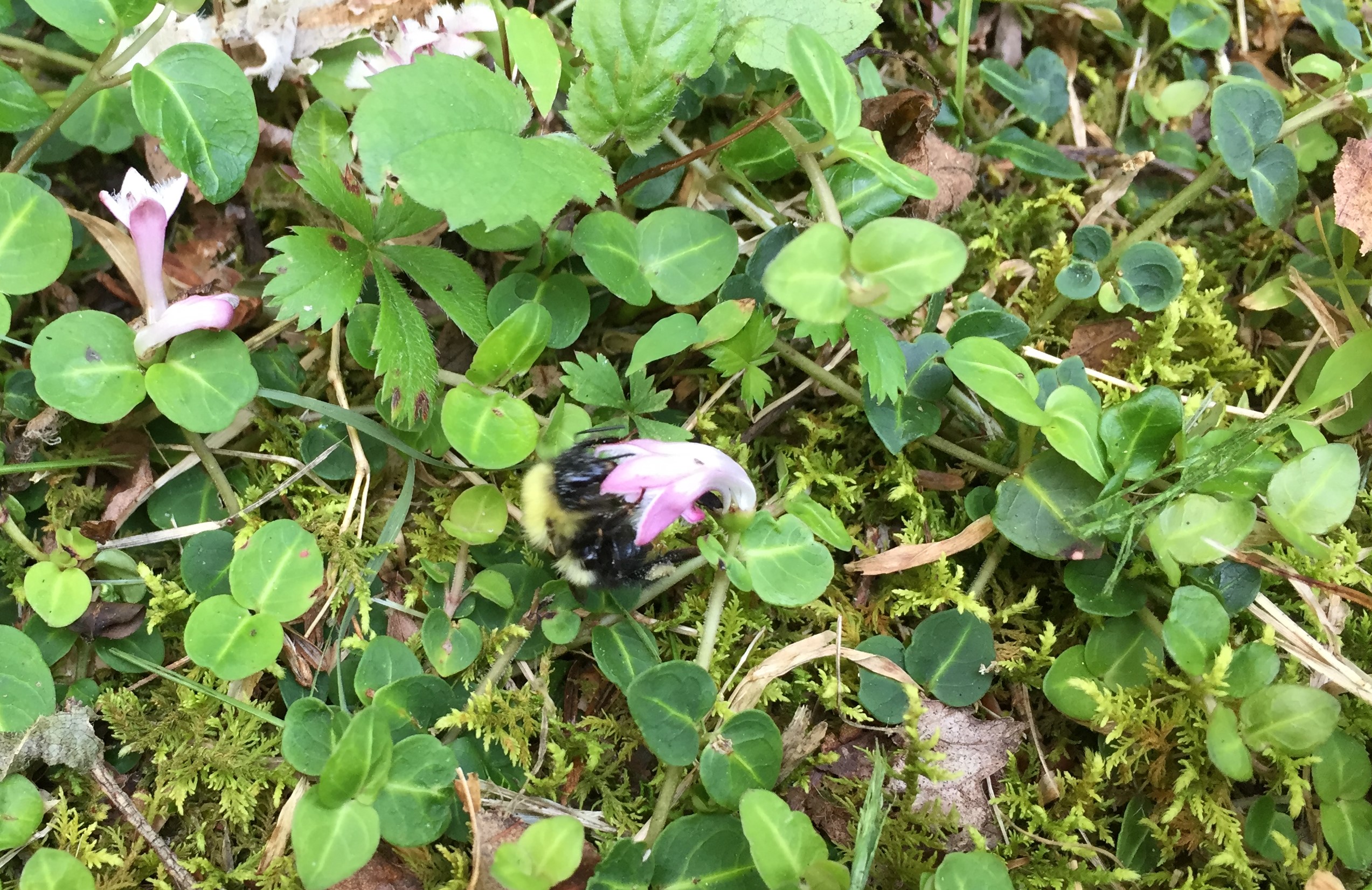
Long tongues enable bumble bees to specialize in pollinating tube-shaped blossoms, such as bee balm, partridge berry, foxglove, cardinal flowers and giant blue lobelia. Shorter tongued bees cannot reach far enough inside to get to the pollen from these flowers. Bumble bees also practice ‘buzz’ pollination by flying inside large flowers and shaking the pollen on top of their hairy bodies. While foraging they gather pollen in ‘pollen baskets’ on their hind legs, as seen in the photo below and the one at the beginning of this article.
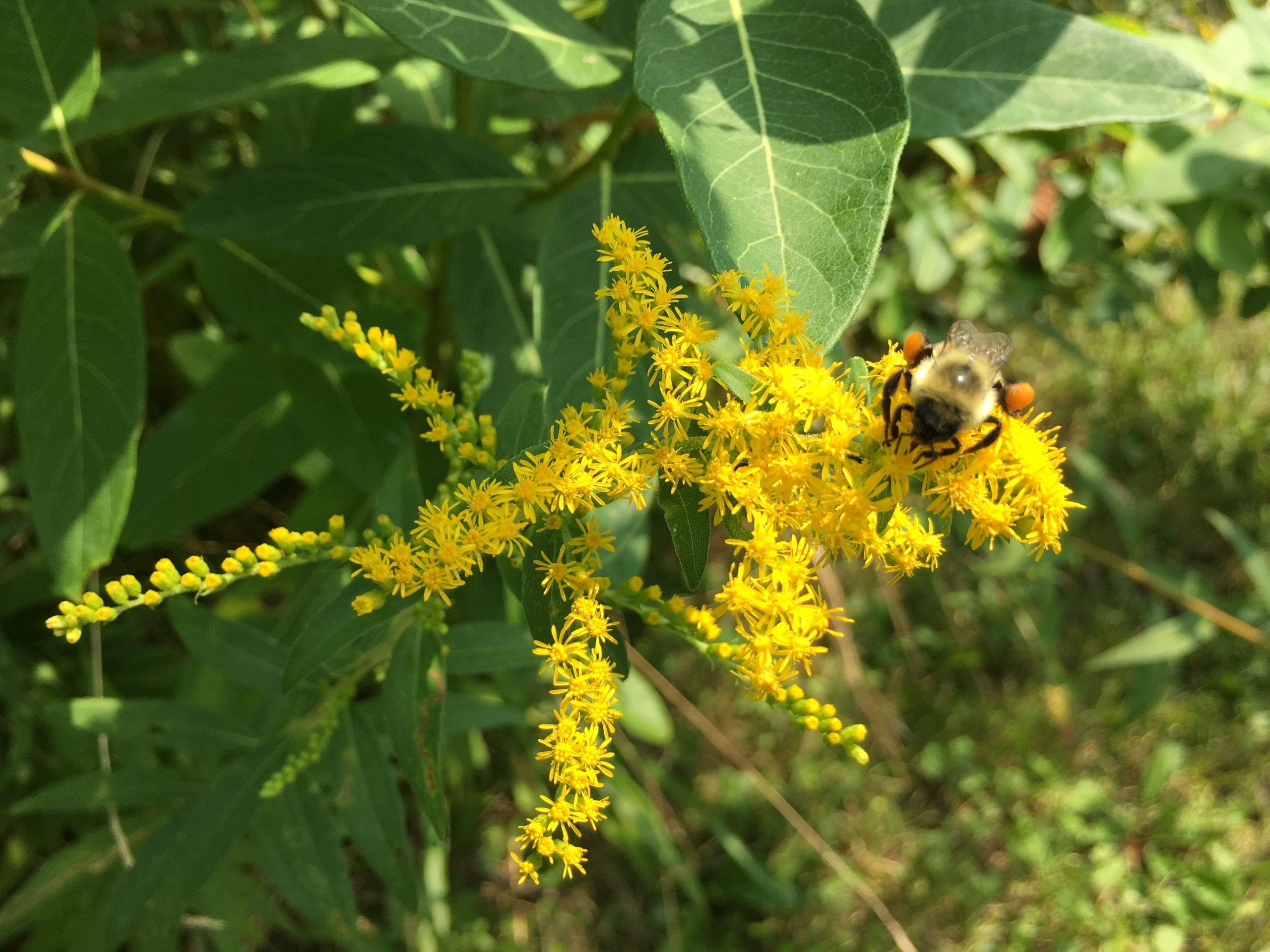
Bumble bees visit a wide range of flower shapes and types that include spring bulbs, native and non-native annuals, perennials, wildflowers and flowering trees and shrubs. Here are some examples:

Dahlia
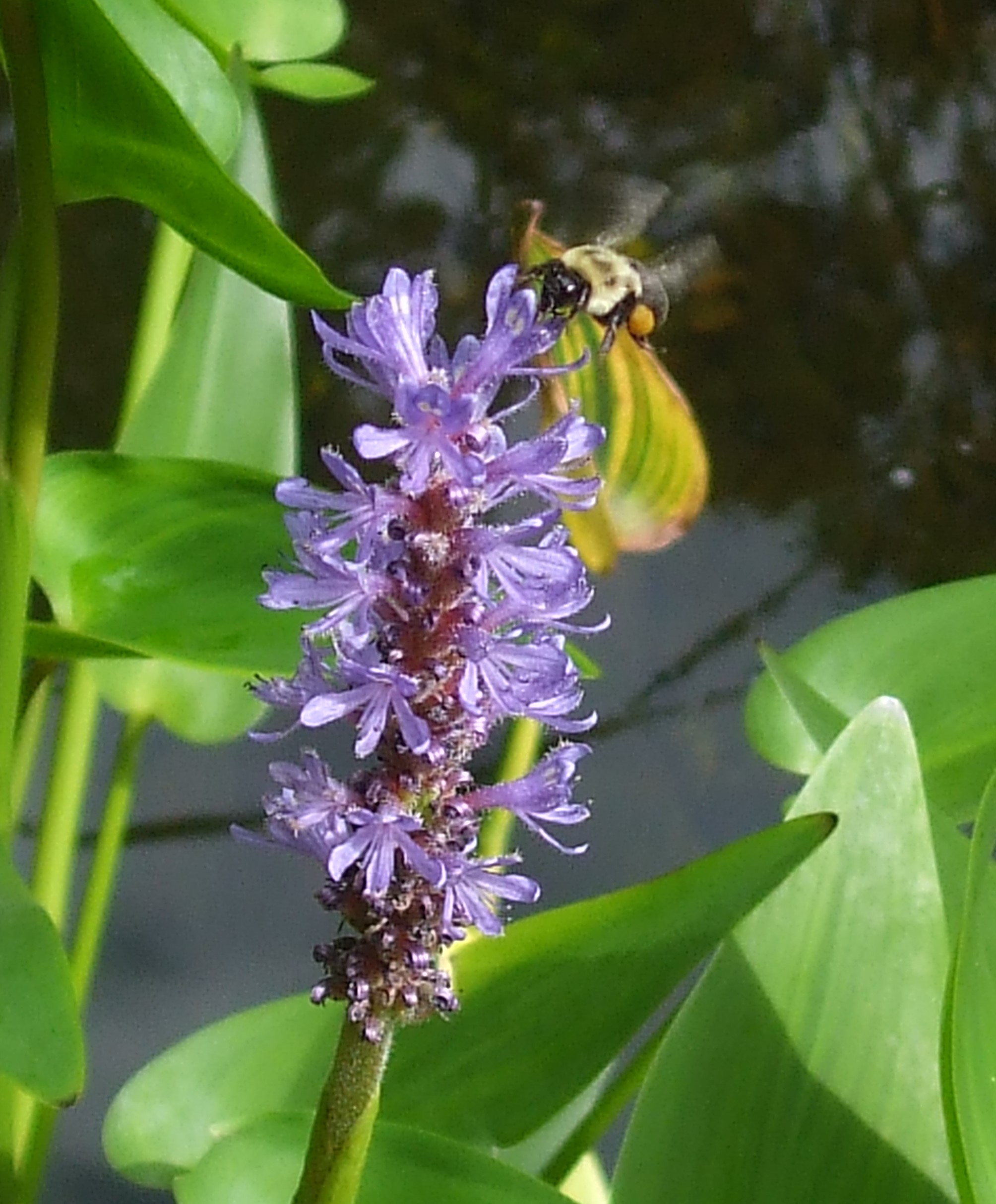
Pickerel Weed – a wetland native
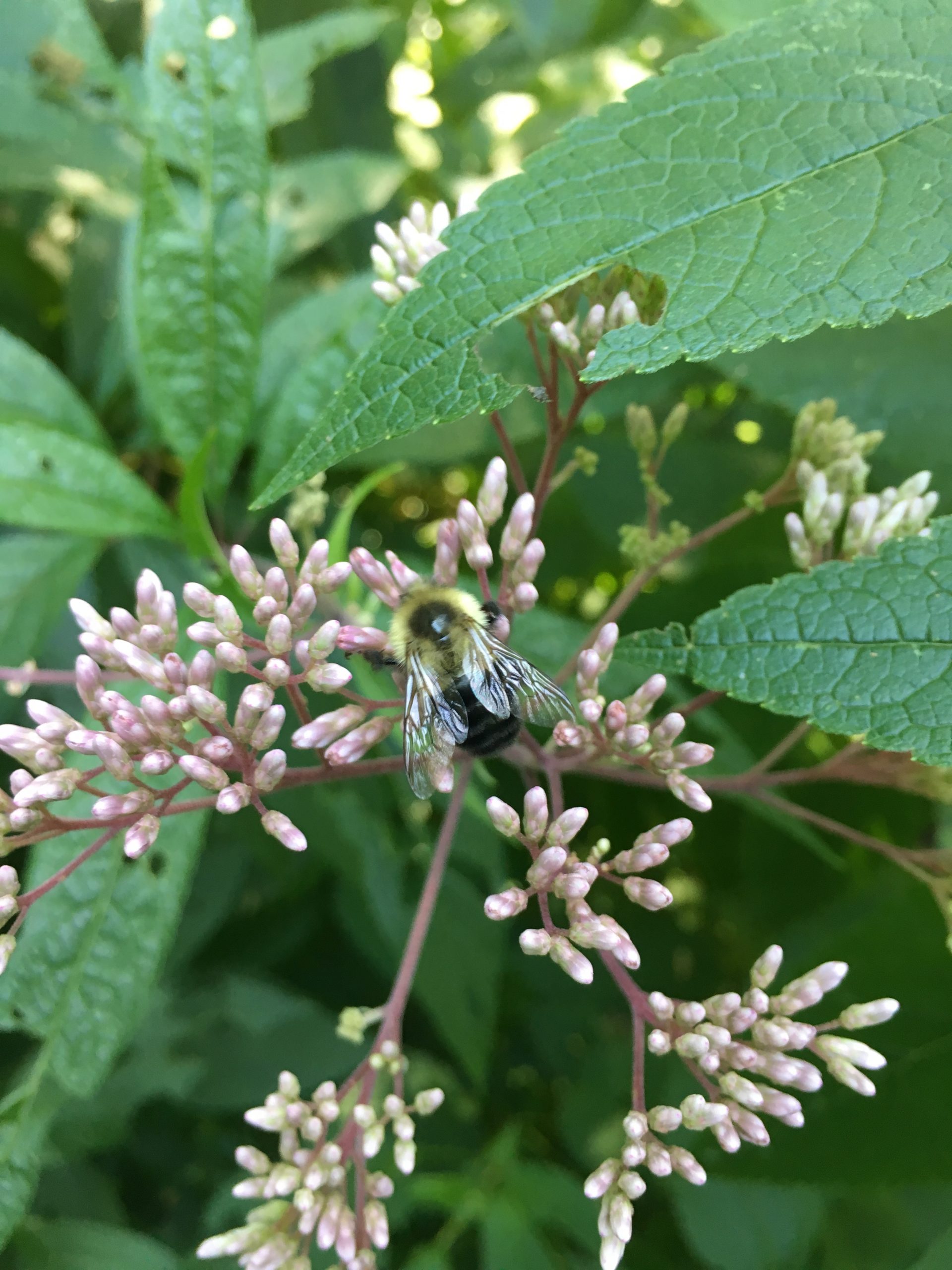
Joe Pye Weed
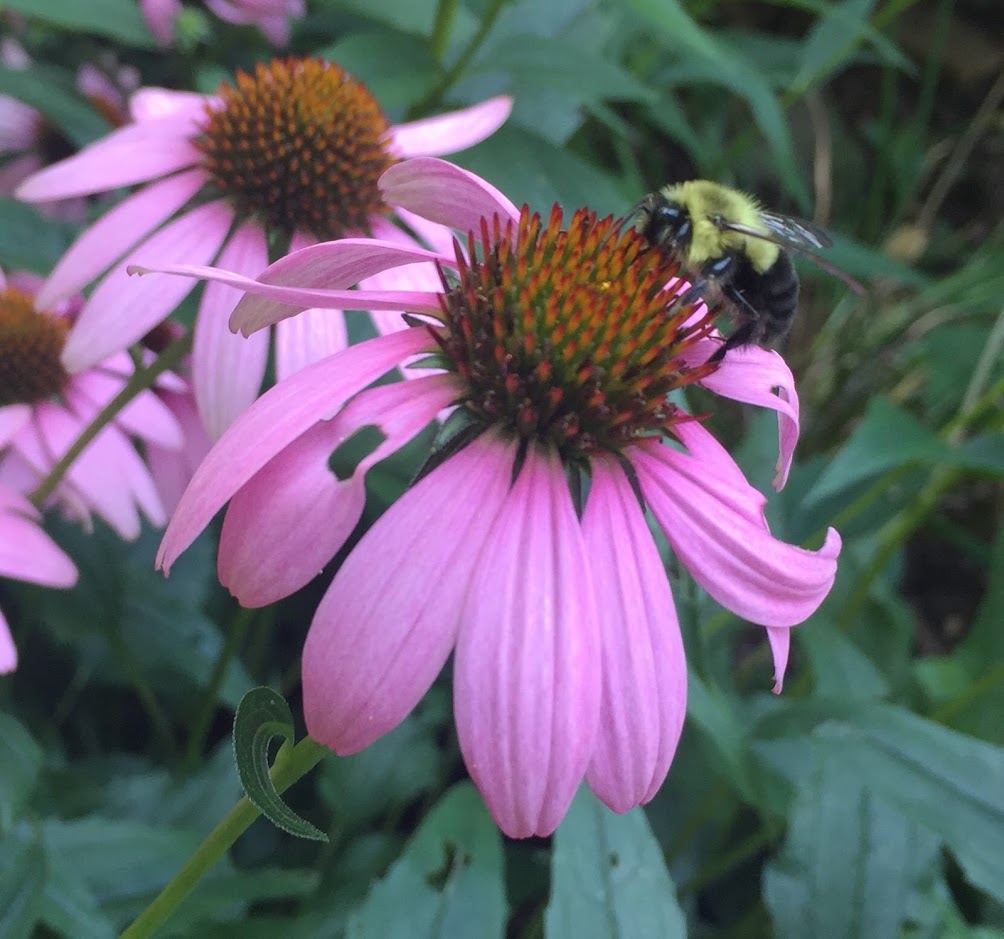
Purple Cone Flower
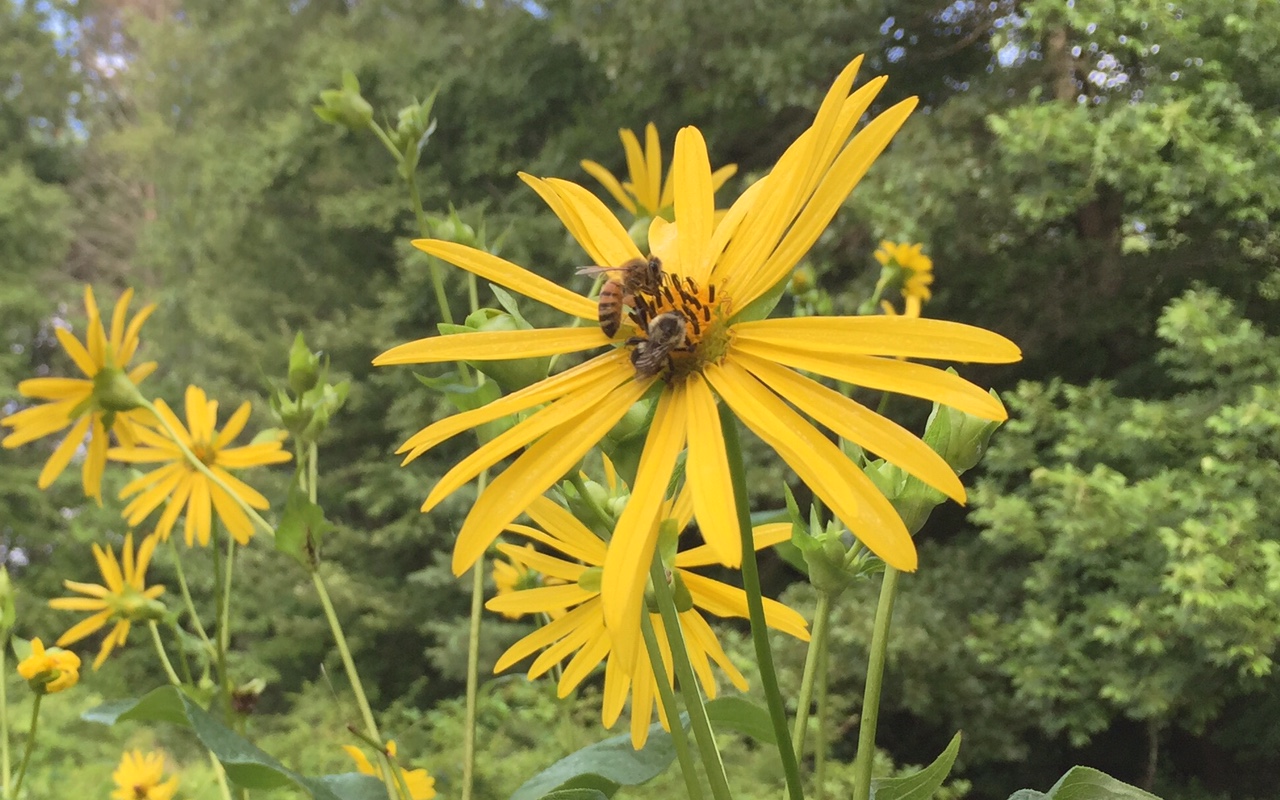
Cup Plant attracting a bumble bee and honey bee at the same time
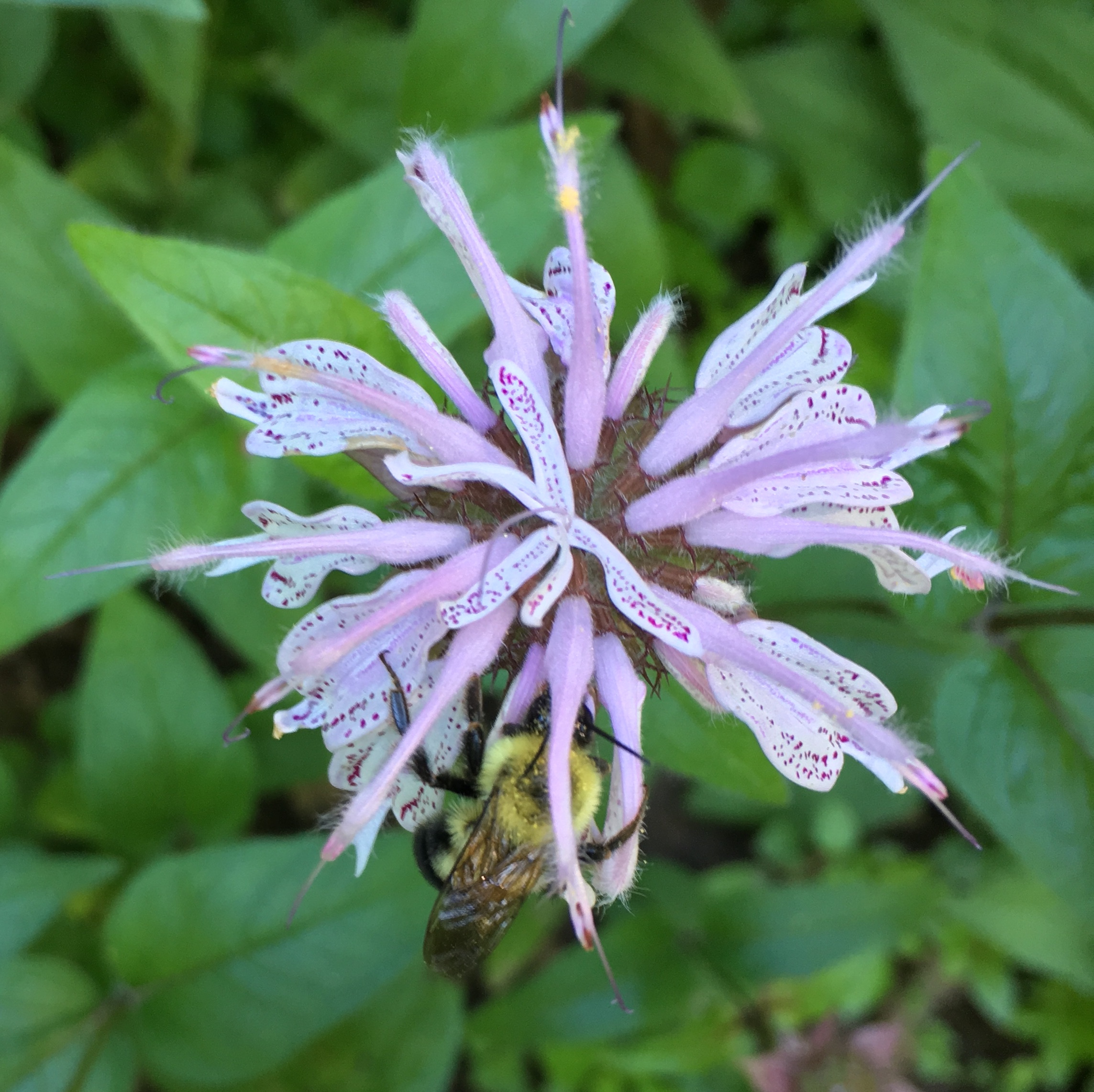
Bee Balm
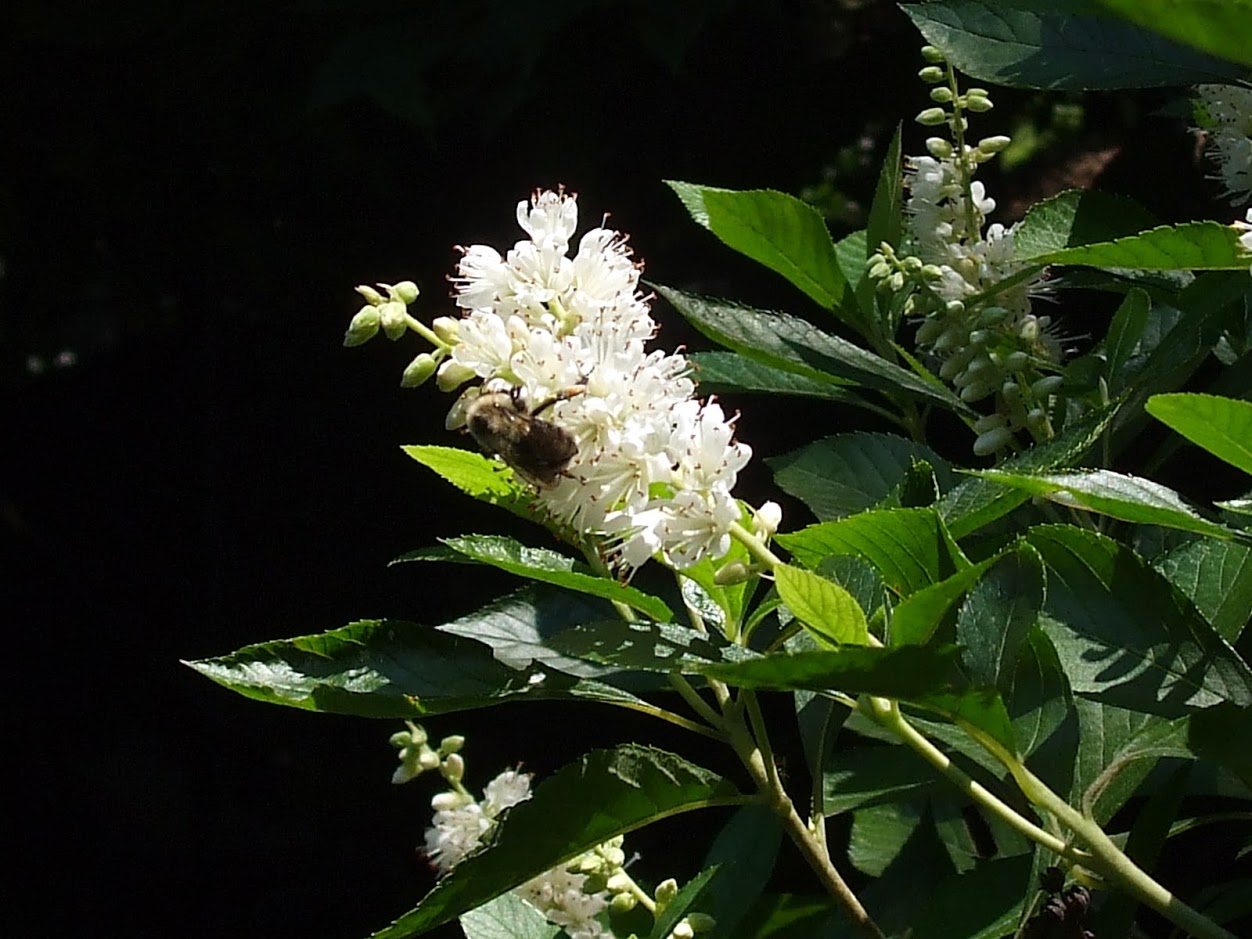
Clethra (also called Summersweet)- a native wetland shrub
Susan. I don’t know which is better…your commentary or the beautiful pictures. Thank you. Kristin Johnson
Great article Susan! I passed it on to my curious grandkids.
Fascinating detail re Queen being the only survivor of colony at end of season. Photos are gorgeous. Thank you for sharing.
So informative Susan! Thank you!